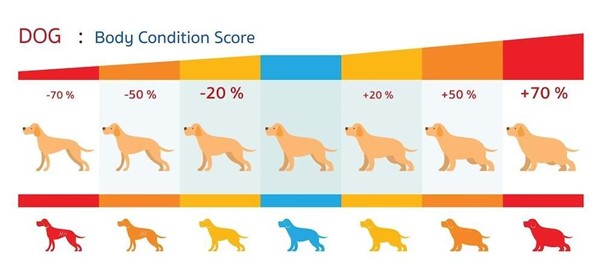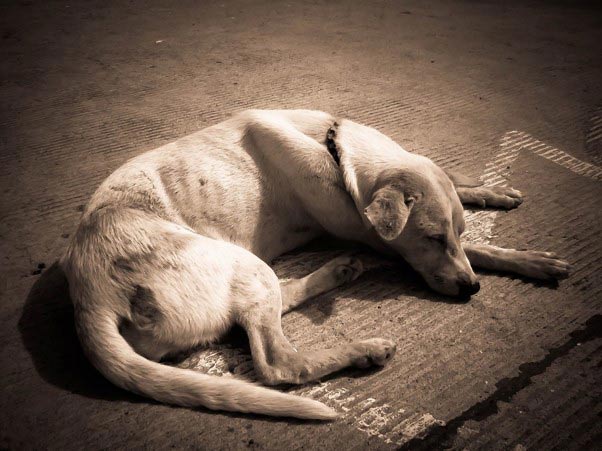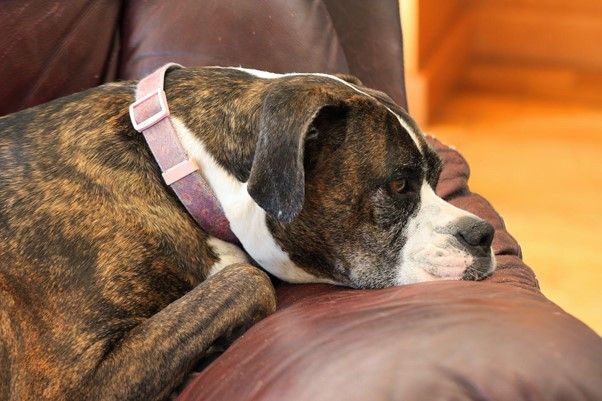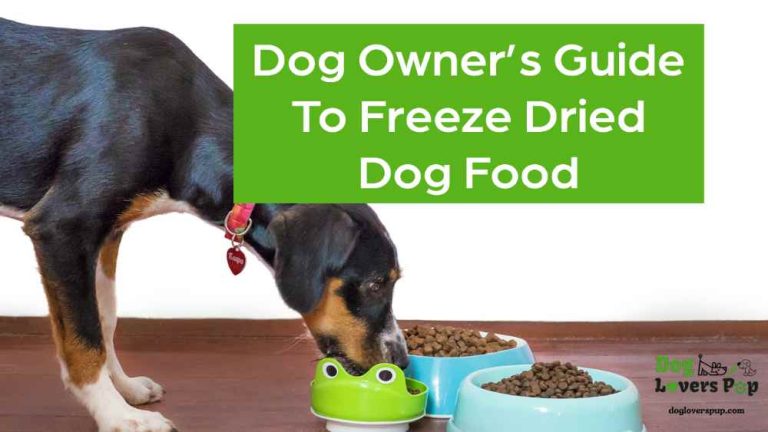A Comprehensive Guide to Determining the Ideal Weight for Your Dog
- Last updated on February 1, 2023
- By: Caroline Stowe
Does your dog look a little too chubby? Or have you been told by your vet that your furry friend could stand to lose a few pounds?
It’s important to ensure that your dog maintains an ideal weight, as overweight dogs can suffer from a variety of health issues. But how do you know what the ideal weight for your pup is?
Let’s take a closer look at what factors go into determining the ideal weight for your pet.
Why Is An Ideal Weight Important ?
Maintaining an ideal weight for your pup is essential for his overall health and well-being. Being overweight or underweight can lead to a range of potential health issues, from joint problems to digestive issues.
Additionally, a healthy weight means that your pup will have more energy and be better able to engage in physical activities such as playing fetch or going for walks with you.
How To Determine Your Dog’s Ideal Weight

The first step in determining the ideal weight for your dog is to ascertain your dog breed.
Different breeds tend to have different ideal weights; for example, a Labrador Retriever typically weighs more than a Chihuahua.
Once you’ve ascertained which breed your pup belongs to, research the recommended weight range for that specific breed. This should give you a general idea of what an ideal weight would be.
Next, use a measuring tape or ruler (in centimeters) and measure around the deepest part of your dog’s chest (which should be near his rib cage).
After taking this measurement, consult with your vet. They should be able to provide you with an accurate assessment of what an ideal weight would be based on the breed and circumference measurements that you provided them with.
Check out the video below on how to determine the ideal body weight of your dog.
How to know if my dog is at its ideal weight
When determining the ideal weight for your dog, you should look for several key characteristics that indicate good health and vitality. Your dog should have an hourglass figure, with a tuck-in visible at the waist when viewed from above.
From the side view, there should be a slight abdominal tuck after their ribcage and hips. Dogs who are obese may show no waistline at all when viewed from above; conversely, dogs who are underweight may appear to have a concave belly line.
Here are some common methods for determining if your dog is at it’s ideal weight:
Body Condition Score (BCS)
One of the most common methods used is the Body Condition Score (BCS). The BCS uses a scale of 1-9 with 1 being way too skinny and 9 being morbidly obese.
Most vets recommend aiming for a score of around 5, which would equate to an ideal body weight range. To determine your pup’s BCS, start by feeling their ribs and spine.
You should be able to feel their ribs but they should not be visible; if you can see them, then they are likely to be underweight.
Next, feel along their back and sides. If there are no rolls or fat deposits, then they should also fall within the ideal range on the BCS scale.
Finally, check out their waistline; it should be clearly defined when viewed from above. If all three criteria meet this criterion then you can rest assured that your pup’s weight is in the healthy range according to their BCS!

Weight Charts and Calculators
Another way to determine if your pup is at its optimal weight is by using breed-specific charts or calculators online. These tools can give you an idea of what size and shape your pooch should be based on its breed type and size.
Simply enter in details like age, sex, breed type, and current weight and these online tools will generate a graph showing where they fall compared to other pups of similar breeds and sizes.
This information can help give you an idea of where they fit within established standards so you know if they need to gain or lose some pounds in order to reach optimal health levels!
Check Energy Levels
Another important factor in determining if your dog is of ideal weight is their energy level.
While some breeds may naturally be more laid back than others (such as bulldogs), an overweight or underweight pup will typically exhibit low energy levels compared to their peers of appropriate size.
If your pup appears lethargic and has trouble keeping up on walks or playtime, it could be a sign they’re not at their ideal weight.
How Can I Help My Dog To Attain The Ideal Weight ?
The most straightforward way to help is by feeding them appropriately. Many pet owners don’t realize that feeding their pets too much can lead to obesity – just like humans, excess calories can quickly add up in pets as well!
To prevent overfeeding, try using portion-control bowls that measure out predetermined amounts of food each day. This will ensure that you don’t accidentally overfeed them.
Additionally, look for high-quality foods with natural ingredients – these foods tend to have fewer fillers and preservatives so they provide more nutrition without all the extra calories!
If your Fido is a bit beefier, then it’s time to start cutting back on treats and increasing exercise time.
For those dogs who need to pack some extra pounds, try adding an extra meal each day or include higher-calorie treats like cheese or peanut butter as rewards for good behavior.
It may seem counterintuitive, but the extra nutrition will help give him the energy boost he needs to stay active—and slim down in the process!
Of course, you should always consult with a vet before making changes to your pup’s diet or activity level. He can provide advice on specific foods that are best suited for your pet’s age and breed as well as suggest exercises designed specifically for them.
Conclusion
By taking into account the breed and size of your pup along with consulting with professional help from your vet, you’ll gain a better understanding of what constitutes as an ideal weight when it comes to helping maintain optimal health for your furry friend – because after all, they are part of the family!
With the right diet and supplements (as recommended by veterinary professionals), you can help maintain optimal health and wellness in your canine companion. So don’t wait – take measures today to help your Fido maintain his ideal weight!
-
Author: Caroline Stowe
- Updated on February 1, 2023
Disclaimer: This article doesn’t intend to replace professional veterinary advice, nor should it be used as a substitute for veterinary services, diagnosis, or treatment. The content on this website, including information and opinions expressed herein, are intended for general informational purposes only. In case you have concerns or questions regarding your dog’s health and diet requirements, please consult your veterinarian before doing anything that might affect it.
DogPetGuide.com and the writer are not responsible or liable for any damage, liability, costs, or claims arising from any possible consequences of the reader’s action after reading this article.




